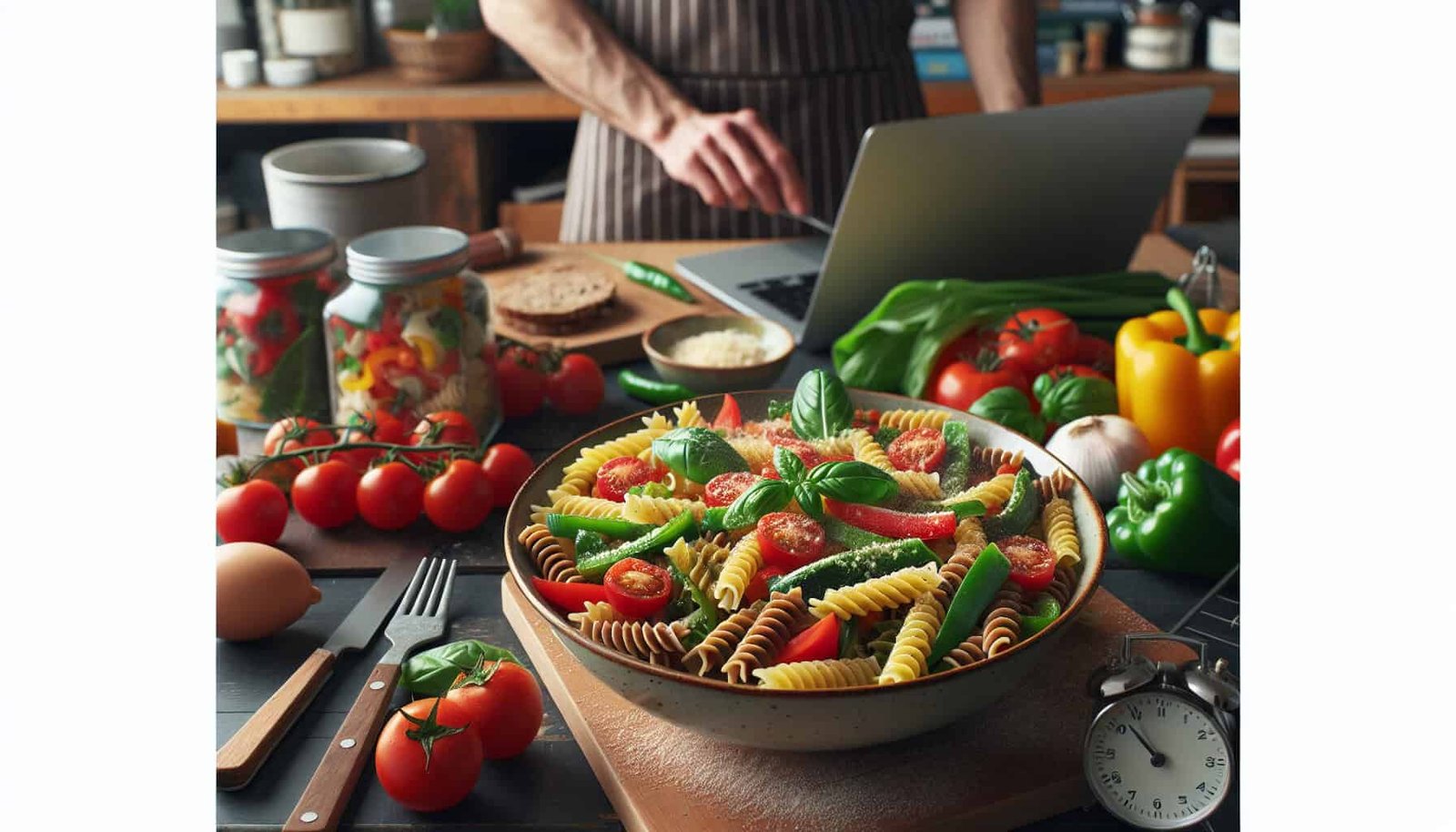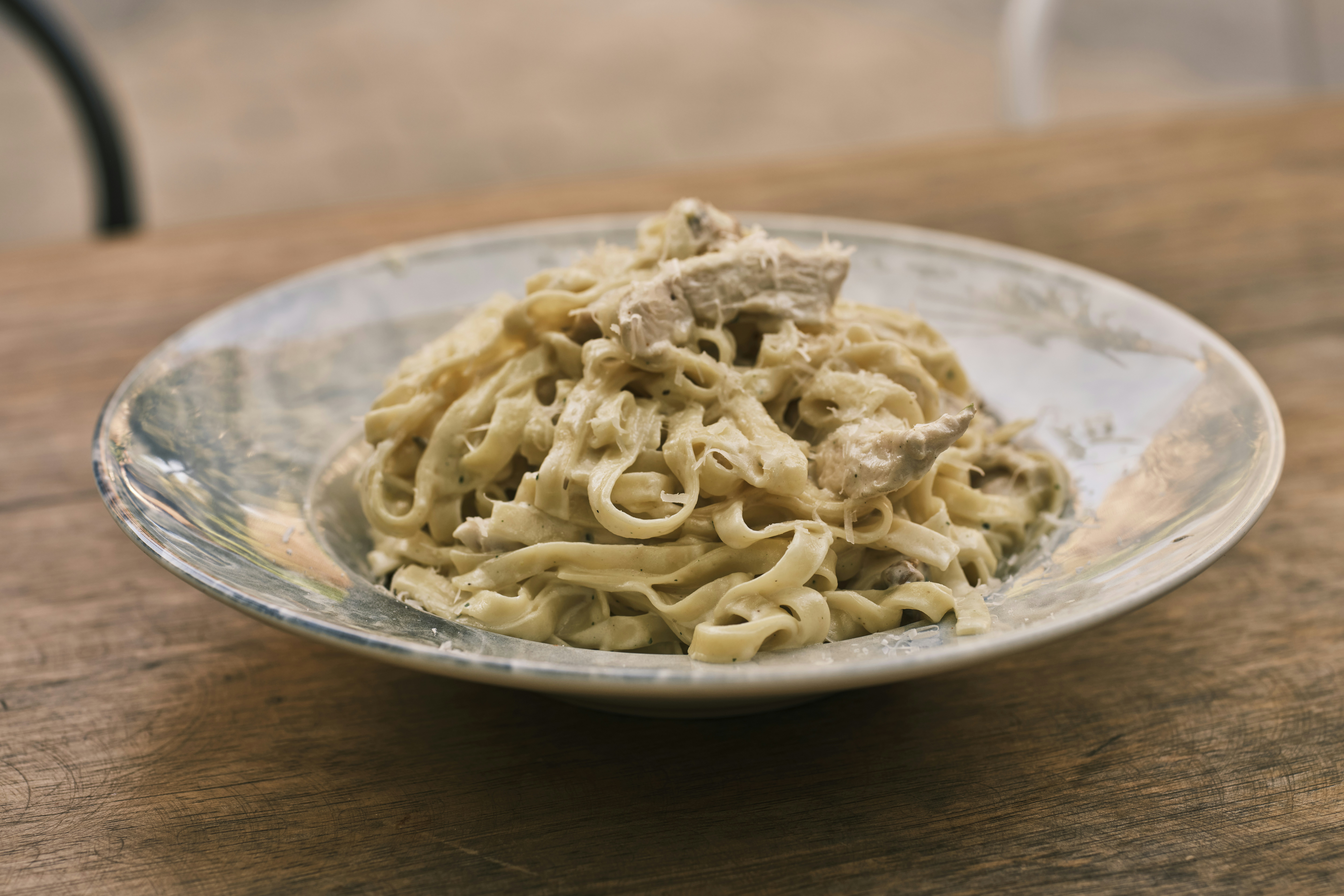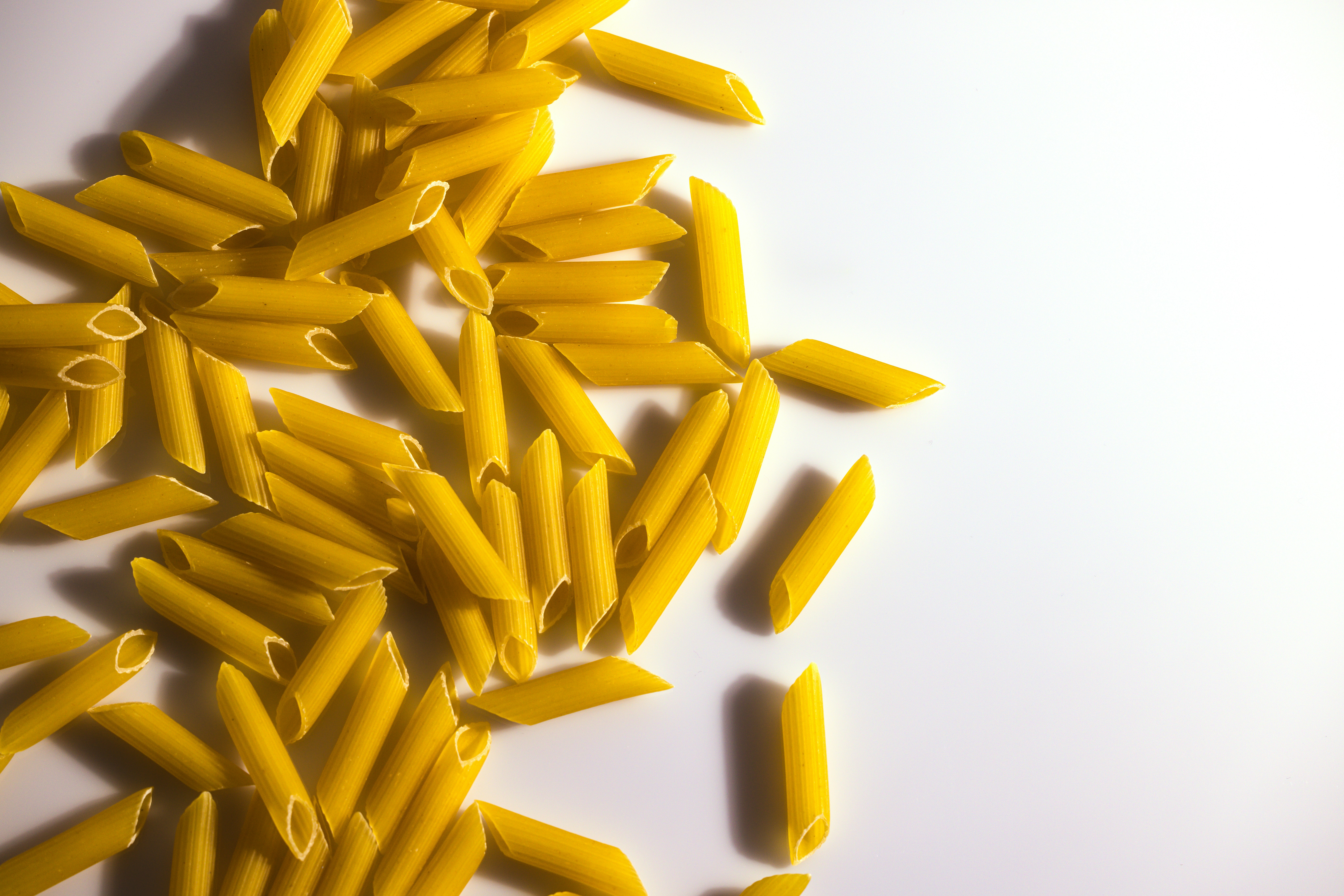Looking for a quick and nutritious meal option to satisfy your taste buds on a busy day? Look no further! In this article, we will explore the world of healthy Italian pasta recipes that are sure to keep you energized and satisfied, even when time is not on your side. With ingredients that are easy to find and simple preparation steps, these mouthwatering dishes will leave you wondering why you haven’t tried them sooner. So, get ready to discover delectable pasta options that will keep you fueled, without compromising on flavor.
Choosing the Right Pasta for a Healthy Meal
When it comes to pasta, choosing the right type can make a big difference in the healthiness of your meal. Two popular options are whole wheat pasta and regular pasta. Whole wheat pasta is made from flour that contains the entire grain, providing more fiber and nutrients. Regular pasta, on the other hand, is made from refined flour which has had the bran and germ removed, resulting in a lower fiber content.
While regular pasta may be a bit lighter and more delicate in flavor, whole wheat pasta has a nuttier taste and a chewier texture. It is also a better option for those looking to incorporate more fiber into their diet. So, if you’re aiming for a healthier meal, consider choosing whole wheat pasta over regular pasta.
Another factor to consider when it comes to pasta is the shape and cooking time. Different pasta shapes can affect the cooking time and the way sauces adhere to the pasta. For example, long and skinny pasta like spaghetti or linguine usually take less time to cook compared to thicker and chunkier shapes like penne or rigatoni. So, keep in mind the cooking time and the sauce you plan to use when choosing your pasta shape.
Ingredients for a Nutritious Italian Pasta Dish
To create a nutritious Italian pasta dish, it’s important to include a variety of ingredients that provide a balance of nutrients. Fresh vegetables are a great addition, as they add color, flavor, and important vitamins and minerals. You can choose from a wide range of vegetables like tomatoes, bell peppers, zucchini, spinach, or mushrooms to add to your pasta.
Lean protein is another essential component of a healthy pasta dish. Opt for grilled chicken, shrimp, or lean cuts of beef or pork to add protein without excess fat. If you prefer a vegetarian option, you can include beans, chickpeas, or tofu for plant-based protein.
Including healthy fats in your pasta dish can also enhance the flavor and provide important nutrients. Avocado, olive oil, or nuts like walnuts or almonds are all great choices for incorporating healthy fats into your meal.
Making a Quick and Healthy Pasta Sauce
The sauce is an integral part of any pasta dish, and there are various options for creating a quick and healthy sauce. Tomato-based sauces are a classic choice and can be prepared in a variety of ways. Simply sauté onions and garlic in olive oil, add canned or fresh tomatoes, and season with herbs like basil and oregano for a simple yet flavorful tomato-based sauce.
Pesto sauce is another delicious option that can be whipped up in no time. Blend fresh basil leaves, pine nuts, garlic, parmesan cheese, and olive oil until smooth, and toss with your cooked pasta for a burst of flavor.
For a creamy and veggie-packed alternative, you can create a sauce using pureed veggies like cauliflower or butternut squash. Simply boil the veggies until tender, blend until smooth, and season with your favorite herbs and spices.
Cooking the Pasta to Perfection
Cooking pasta might seem like a simple task, but there are a few key steps to ensure you end up with perfectly cooked pasta every time. Start by boiling a pot of water that is large enough to accommodate the pasta without overcrowding. It’s important to give the pasta room to move and cook evenly.
Adding salt to the water is a step that should not be overlooked. Salt enhances the flavor of the pasta and helps to season it from the inside. Aim for about 1-2 tablespoons of salt for every pound of pasta.
The cooking time will vary depending on the type and shape of pasta you’re using. It’s best to follow the instructions on the package, but keep in mind that pasta should be cooked until it is al dente, which means it is cooked through but still firm when bitten. Overcooked pasta can become mushy and lose its texture.

Preparing the Toppings and Garnish
To elevate the flavors and presentation of your pasta dish, adding toppings and garnish is key. Fresh herbs and spices can bring a burst of aromatic flavor. Consider using herbs like basil, parsley, or rosemary to add a touch of freshness and complexity to your dish. Sprinkle them over your pasta just before serving to maximize their taste.
Grated cheese is a classic topping for pasta and can add richness and depth of flavor. Parmesan cheese, in particular, pairs well with many pasta dishes. Sprinkle a generous amount of freshly grated cheese on top of your pasta to enhance its taste.
Fresh basil leaves can also be used as a garnish, adding a pop of color and a pleasant herbal aroma. Tear a few leaves and scatter them over your pasta to give it a finishing touch.
Serving Suggestions for a Busy Day
When you’re pressed for time, it’s important to find ways to streamline your meal preparation. Here are some serving suggestions for a busy day:
Portion control is key to maintaining a healthy diet. Instead of serving yourself a large portion of pasta, try to stick to a moderate serving size. This will help you avoid overeating and leave room for other nutrient-dense foods.
Pair your pasta dish with a side salad to increase the overall nutritional value of your meal. Choose a salad that is filled with fresh vegetables, such as leafy greens, tomatoes, and cucumbers. Dress it with a light vinaigrette or lemon juice for a tangy flavor.
If you’re in need of some carbohydrates to fuel your busy day, consider serving your pasta dish with a quick bread like garlic bread or whole grain rolls. These can be prepared in advance or purchased from a local bakery for added convenience.
Alternative Options for Special Dietary Needs
For those with special dietary needs, there are alternative pasta options available. For individuals with gluten sensitivity or celiac disease, gluten-free pasta made from ingredients like rice, corn, or quinoa can be a suitable option. These pastas are designed to mimic the taste and texture of traditional pasta while being safe for gluten-intolerant individuals to consume.
Vegetarian or vegan pasta dishes are also popular and can be enjoyed by individuals following plant-based diets. Simply omit the meat or dairy products in the recipes and replace them with plant-based alternatives. Consider using tofu, tempeh, or legumes to provide protein, and opt for dairy-free cheese or nutritional yeast for added flavor.
One-Pot Pasta Recipes for Convenience
For the ultimate convenience, one-pot pasta recipes are a time-saving solution. These recipes allow you to cook the pasta and the sauce in a single pot, minimizing cleanup and simplifying the cooking process.
One-Pot Caprese Pasta is a delicious option that combines the flavors of fresh tomatoes, mozzarella cheese, garlic, and basil. Simply toss all the ingredients into a pot, add water or vegetable broth, bring to a boil, and cook until the pasta is done. This quick and easy recipe is perfect for busy days when you want a satisfying meal without much effort.
Another one-pot pasta recipe to consider is the One-Pot Mediterranean Pasta. This dish features ingredients like olives, sundried tomatoes, artichoke hearts, and spinach, giving it a flavorful and vibrant Mediterranean twist. It’s a nutritious and delicious option that can be prepared in a single pot, making it ideal for busy individuals.

Preparing Pasta in Advance for Meal Prep
If you want to save time on busy days, it’s a great idea to prepare pasta in advance for meal prep. By cooking and cooling the pasta ahead of time, you can store it in the refrigerator and use it as needed throughout the week.
To prepare pasta for meal prep, start by cooking the pasta according to the package instructions. Once cooked, drain the pasta and rinse it under cold water to stop the cooking process. Toss the pasta with a little olive oil to prevent it from sticking together, and let it cool completely before transferring it to an airtight container. Refrigerate the cooked pasta for up to 3-4 days.
When it’s time to use the precooked pasta, simply reheat it by tossing it in a hot skillet with a little olive oil or by microwaving it for a few minutes until warmed through. This convenient method allows you to have a quick and satisfying meal ready in no time.
Healthy Italian Pasta Recipes for Busy Days
Now that you have all the tips and tricks for creating a healthy pasta dish, here are a few recipes to inspire you on busy days:
Whole Wheat Spaghetti with Tomato-Basil Sauce: Cook whole wheat spaghetti according to package instructions. In a separate pan, sauté onions and garlic in olive oil, then add crushed tomatoes and simmer for about 10 minutes. Season with salt, pepper, and a handful of fresh basil leaves. Toss the cooked spaghetti in the sauce and garnish with grated parmesan cheese.
Penne with Lemon-Garlic Shrimp and Broccoli: Cook penne pasta according to package instructions. In a skillet, sauté shrimp in olive oil with minced garlic, lemon zest, and red pepper flakes until cooked through. Steam broccoli until tender, then add it to the skillet with the cooked pasta. Toss everything together, season with salt and black pepper, and squeeze fresh lemon juice over the top before serving.
Farfalle with Grilled Chicken and Creamy Pesto: Grill chicken breast until cooked through, then slice into strips. Cook farfalle pasta according to package instructions. In a food processor, blend fresh basil leaves, pine nuts, garlic, parmesan cheese, and olive oil until smooth. Toss the cooked pasta with the creamy pesto sauce and top with grilled chicken strips.
These healthy Italian pasta recipes are quick, delicious, and packed with nutrients, making them perfect for busy days when you need a nourishing meal in a hurry. Enjoy!



